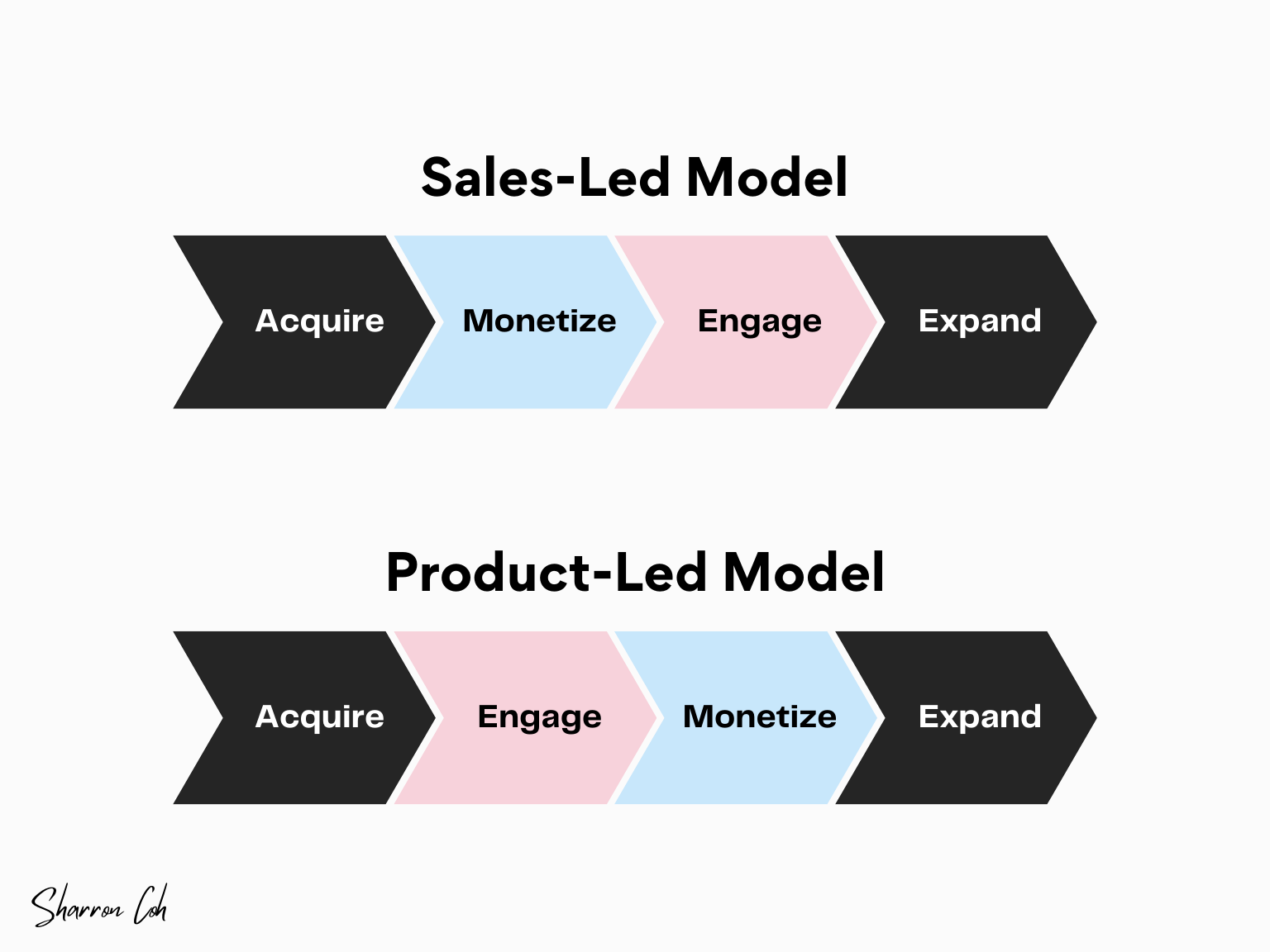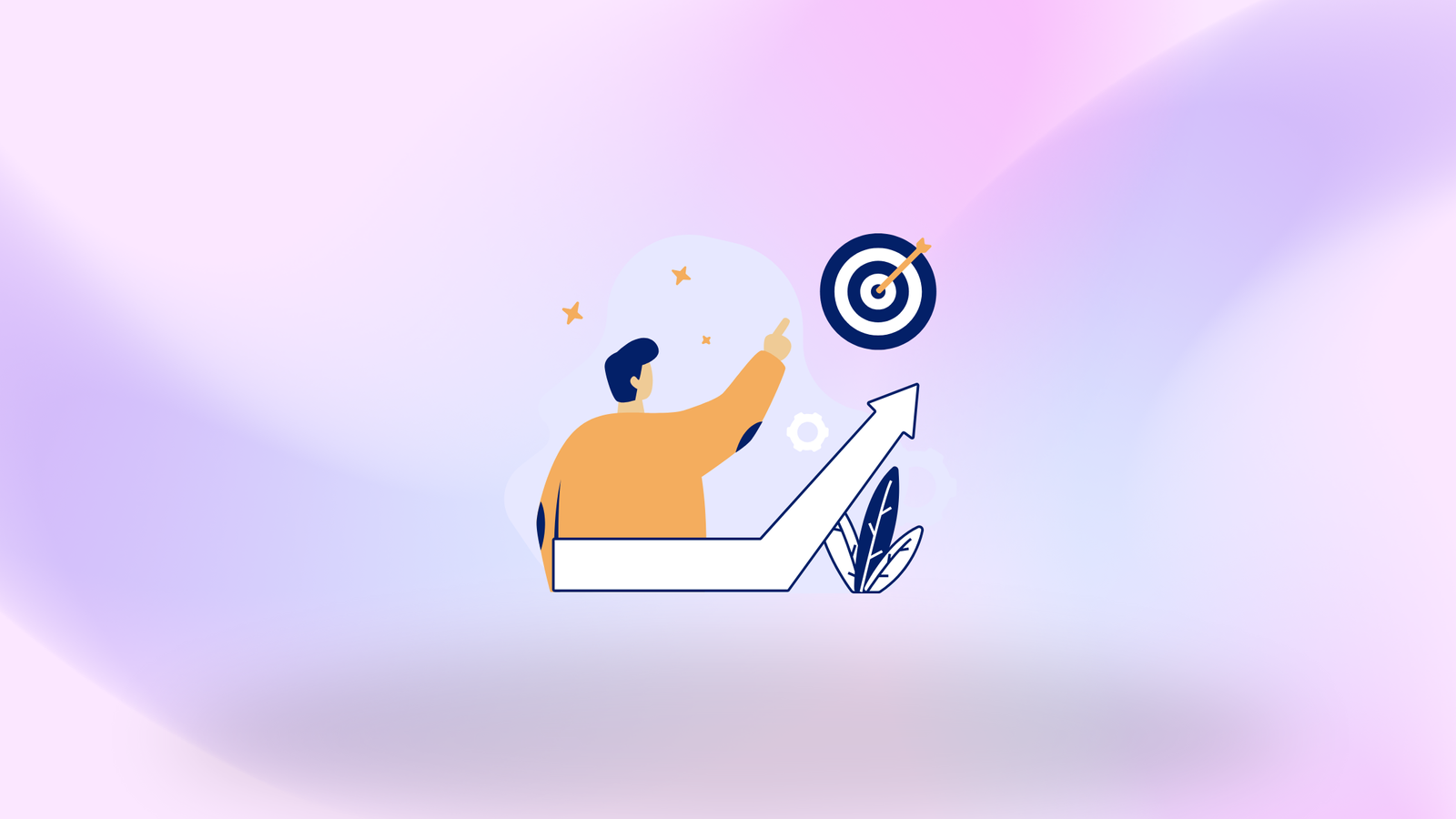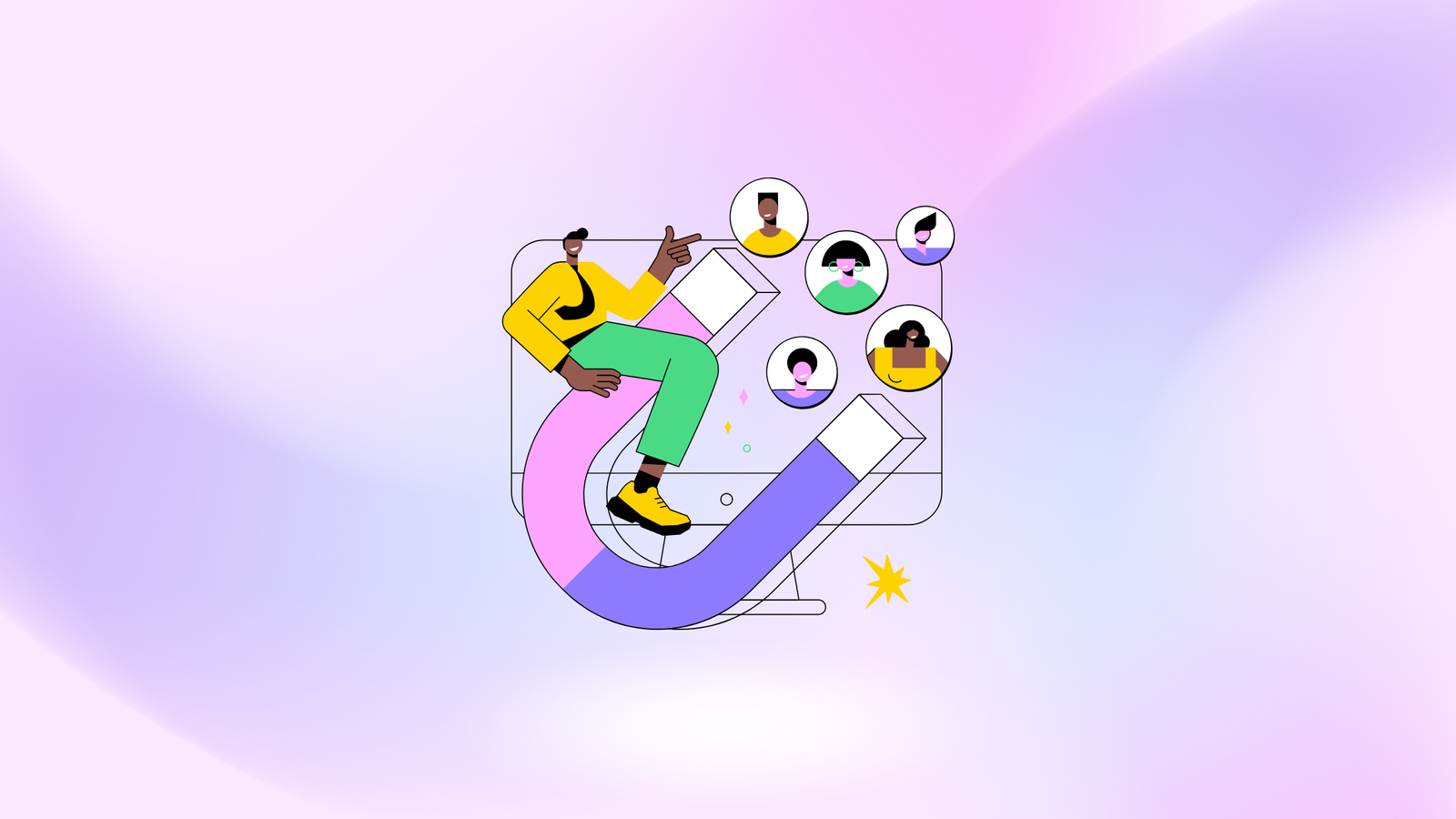Did you know the global Software as a Service industry has surpassed $273 billion in value, according to Fortune Business Insights?
That’s an absolutely massive opportunity for growth!
But in today’s hyper-competitive landscape, you can’t just sit back and expect customers to come knocking down your door.
Scaling a SaaS business in 2024 demands a strategic, data-driven approach to customer acquisition, retention, and revenue optimization.
It’s a never-ending battle that requires constant experimentation and innovation to stay ahead of the curve.
From viral loops and product-led growth to personalized onboarding and AI-powered chatbots, these battle-tested tactics have helped SaaS companies like Slack, Dropbox, and HubSpot achieve triple-digit growth year after year.
It’s fair to say that there are no silver bullets or overnight successes – just a relentless focus on understanding your customers and delivering undeniable value.
On that note, ready to discover the growth hacks that will take your SaaS business to the next level?
Let’s get started!
Key Takeaways
- Growth hacking focuses on rapid experimentation with low-cost strategies to drive explosive SaaS growth.
- Top proven growth hacks include product-led growth, usage-based pricing, customer success, AI personalization, and free tools for lead generation.
- Advanced tactics involve product-qualified leads, integration marketplaces, personalized pricing, gamification, and AI chatbots.
- Sustainable growth requires customer-centricity, continuous optimization, and a mindset of constant experimentation.
- Examples from Dropbox, Slack, Snowflake, Netflix, and HubSpot showcase the impact of these strategies.
- To get started, pick just one growth hack to test in your business over the next month, focusing on iterating quickly based on data.
What are SaaS Growth Hacks?
Growth hacking. It’s the buzzword on every SaaS founder’s lips these days. But what does it actually mean?
In a nutshell, growth hacking is the art and science of experimenting with creative, low-cost strategies to rapidly grow your SaaS business.
It’s about finding innovative ways to acquire, retain, and monetize customers – fast.
Think of growth hacking as the scrappy, data-driven cousin of traditional marketing.
While old-school marketers might rely on tried-and-true tactics like billboards and TV ads, growth hackers are constantly testing new, unconventional ideas and leveraging existing platforms in innovative ways.
The goal? Achieving the elusive “hockey stick” growth that every SaaS founder dreams of – without breaking the bank.
Growth hacking isn’t just about throwing spaghetti at the wall and seeing what sticks. It’s a data-driven approach that requires a deep understanding of your customers, your product, and your market.
By 2025, SaaS applications are projected to power 85% of business apps, highlighting the enormous growth potential in this space – it’s about tilting the odds in your favor through relentless experimentation and iteration.
So if you’re ready to roll up your sleeves, dive into the data, and think outside the box, read on.
Top 18 Proven SaaS Growth Hacks
Let’s get into the exciting part – the actual growth hacks that will take your SaaS to new heights.
I’ve compiled a list of the top strategies that the most successful companies are leveraging to achieve explosive overall growth.
Growth Hack #1: Embrace Product-Led Growth
Product-led growth (PLG) is all the rage these days, and for good reason, as it drives significant ARR.
Instead of relying on a traditional sales-led approach, PLG puts the product at the center of the customer acquisition and expansion process.
By offering a freemium or trial version of your product, you allow potential customers to experience the value firsthand before committing to a purchase.
This not only reduces friction in the sales process but also helps you acquire users at a much lower cost compared to outbound sales or paid advertising.
But PLG isn’t just about acquisition – it’s also a powerful way to drive expansion revenue.
By continuously delivering value and providing in-app prompts for feature upgrades, you can encourage existing users to convert to paid plans or higher-tier packages.
According to data from Copy Noise, freemium SaaS tools convert 25% more customers than free trials without requiring a sales team. This highlights the effectiveness of letting users experience your product’s value before asking them to pay.
To really nail product-led growth, you need to optimize your entire user journey to drive “aha” moments and reduce friction..
Growth Hack #2: Implement a Usage-Based Pricing Model
Pricing is one of the most powerful levers for driving SaaS growth, yet many companies still rely on outdated subscription-based models.
Usage-based pricing will be the go-to strategy for progressive SaaS businesses looking to align their revenue with the value they deliver.
Public cloud spending is predicted to exceed 45% of all enterprise IT spending by 2026, making flexible, usage-driven pricing models essential.
With usage-based pricing, customers only pay for what they actually use, whether that’s the number of API calls, gigabytes of data processed, or minutes of video transcoded.
This model is a win-win: customers have more flexibility and control over their costs, while SaaS companies can tap into a recurring revenue stream that grows alongside usage.
But the benefits don’t stop there.
Usage-based pricing also helps combat churn by ensuring that customers are only paying for the value they’re receiving.
Plus, it provides a natural upsell path as customers increase their usage over time. Companies like Twilio, Stripe, and AWS have all seen massive success with usage-based models.
Growth Hack #3: Double Down on Customer Success
In the hyper-competitive world of SaaS, customer success is no longer a nice-to-have – it’s a must-have to maintain a strong growth rate.
Companies that prioritize customer success not only reduce churn but also unlock a goldmine of expansion revenue opportunities.
Proactively helping customers achieve their desired outcomes and get maximum value from your product, you create loyal advocates who are more likely to renew, upgrade, and refer others.
But customer success isn’t just about playing defense against churn. It’s also a powerful offensive strategy for driving expansion revenue.
By identifying power users and promoting advanced features, customer success teams can actively encourage upgrades and cross-sells.
Growth Hack #4: Leverage Integrations and Partnerships
No SaaS product exists in a vacuum.
To truly drive growth, you need to meet your customers where they already are by integrating with the other tools and platforms they rely on daily.
Building integrations and partnerships with complementary products, you can tap into new user acquisition channels, enhance the value of your own product, and create stickier customer relationships.
But integrations aren’t just about playing nice with others – they can also be a powerful monetization strategy.
By offering premium integrations or revenue-sharing partnerships, you can create a whole new stream of revenue beyond your core product, enhancing revenue growth..
Slack’s app directory and Salesforce’s AppExchange are prime examples of how integrations can drive massive growth.
Growth Hack #5: Experiment with New Acquisition Channels
Paid advertising on Google and Facebook may be the default acquisition channels for most SaaS companies, but the real growth opportunities lie in exploring untapped channels and experimenting with new tactics.
From influencer marketing on TikTok to co-marketing partnerships with adjacent brands, there are endless ways to get creative and reach new audiences.
For SaaS companies targeting other businesses, platforms like X and LinkedIn present opportunities to build thought leadership and attract potential customers through valuable content and industry insights.
The key is to constantly test and iterate to find the channels that deliver the best ROI for your specific product and target customer.
One particularly promising acquisition channel for SaaS companies is online communities and forums.
By actively participating in relevant discussions and providing genuine value, you can build trust and awareness with potential customers who are already engaged in your industry.
Companies like Ahrefs and Notion have seen massive success with this community-driven approach.
Growth Hack #6: Optimize Your Onboarding Experience
User onboarding is a make-or-break moment for any SaaS product.
If users can’t quickly see the value and figure out how to use your product, they’ll churn before you even have a chance to convert them to paying customers.
The most successful SaaS companies will be those that invest heavily in creating personalized, interactive onboarding experiences that guide users to their aha moment as quickly as possible.
By segmenting users based on their use case, role, or behavior and tailoring the onboarding accordingly, you can dramatically increase activation rates and trial-to-paid conversions.
But onboarding isn’t a one-and-done process.
The best companies continue to provide ongoing education and support throughout the customer journey, using in-app guides, email campaigns, and other touchpoints to continuously drive feature adoption and engagement.
Duolingo’s gamified onboarding and Asana’s interactive product tours are great examples to learn from.
Growth Hack #7: Embrace AI-Powered Personalization
Artificial intelligence is no longer a futuristic concept – it’s a powerful tool that SaaS companies can leverage today to drive personalized experiences at scale.
By harnessing the power of machine learning and natural language processing, you can deliver hyper-relevant content, product recommendations, and support to each and every user.
From chatbots that provide instant answers to customer queries to predictive analytics that identify at-risk accounts, AI can help you automate and optimize every stage of the customer journey.
As reported by IBM, 35% of SaaS companies use AI today, while a further 42% intend to, underscoring the need for SaaS providers to embrace AI to remain competitive.
But AI isn’t just about efficiency – it’s also a key differentiator in an increasingly crowded market.
By providing personalized experiences that feel tailor-made for each user, you can create a stronger emotional connection and loyalty with your brand, helping improve your SaaS growth metrics..
Netflix’s recommendation engine and Spotify’s Discover Weekly playlist are prime examples of how AI can drive engagement and retention.
Growth Hack #8: Implement a Freemium Model
Freemium has become the go-to model for many SaaS companies, and for good reason.
By offering a free version of your product with limited features or usage, you can attract a large user base, demonstrate value, and then upsell to paid plans over time.
Freemium allows you to leverage product-led growth (see Hack #1) and significantly reduces customer acquisition costs.
Slack, Dropbox, Zoom, and countless other SaaS giants have used freemium to fuel their explosive growth.
Growth Hack #9: Focus on Expansion Revenue
For most SaaS companies, the real growth opportunity lies not in acquiring net new customers but in expanding revenue from existing ones.
Expansion revenue, which comes from upsells, cross-sells, and add-ons, is often more profitable and predictable than new business.
To maximize expansion revenue, focus on driving product adoption and usage within your customer base.
Use in-app guides, email campaigns, and customer success touchpoints to continuously educate users and promote advanced features.
Growth Hack #10: Leverage SEO and Content Marketing
In the age of information overload, creating valuable, search-optimized content is one of the most effective ways to attract and engage your target audience.
By consistently publishing blog posts, guides, videos, and other resources that address your customers’ pain points and questions, you can establish your brand as a trusted authority and generate a steady stream of organic leads.
For SaaS companies, it’s crucial to create content that targets both top-of-funnel keywords (e.g., “project management software”) and bottom-of-funnel phrases (e.g., “Asana vs. Trello comparison”).
This approach helps you capture leads at various stages of the buyer’s journey.
SEO and content marketing do require patience and persistence, but the long-term payoff is worth it.
As OptinMonster’s research reveals, companies that make blogging a priority are 13 times more likely to generate positive ROI, demonstrating the substantial impact of a well-executed content strategy.
Growth Hack #11: Implement Exit-Intent Popups
Exit-intent popups are those messages that appear when a user is about to leave your website, a key tactic in modern SaaS growth strategies..
While they may seem annoying, they can be incredibly effective at converting abandoning visitors into leads or customers.
By offering a discount, free trial, or valuable resource just as someone is about to bounce, you give them a compelling reason to stick around and engage with your brand.
By strategically deploying exit-intent popups, websites can successfully re-engage and save around 15% of visitors who would otherwise leave a website.
Growth Hack #12: Run Retargeting Ads
97% of visitors to your website will leave without converting. Retargeting allows you to bring those people back by showing them relevant ads as they browse other sites online.
By targeting people who have already shown interest in your product, retargeting can dramatically increase conversion rates and ROI compared to other forms of advertising.
In fact, retargeting ads are clicked 76% more often than regular display ads, showing their effectiveness in re-engaging prospects.
To maximize results, segment your audience based on their behaviour and interests, and consider using dynamic ads that showcase the specific products or services a user viewed on your site.
By leveraging retargeting strategically, you can dramatically increase conversions, optimize your ad spend, and watch your SaaS business substantially grow.
In other words, don’t let those valuable prospects slip away – use retargeting to reel them back in and convert them into loyal customers. Your bottom line will thank you!
Growth Hack #13: Offer a Free Tool or Resource
One of the best ways to attract high-quality leads is by offering a free tool or resource that solves a specific problem for your target audience.
This could be a calculator, template, checklist, or mini-app that showcases your expertise and provides immediate value.
By gating this resource behind a lead capture form, you can quickly build your email list and nurture those leads into customers over time.
CoSchedule’s Headline Analyzer is a great example of a free tool that provides value to their target audience. This tool helps marketers and content creators craft compelling headlines by scoring them based on factors like word balance, length, and sentiment.
By offering this free resource, CoSchedule attracts potential customers and demonstrates their expertise in content marketing.
Growth Hack #14: Leverage Social Proof
Social proof is a powerful psychological principle that states people are more likely to take a desired action when they see others doing it, especially in the competitive SaaS market.
In the context of SaaS growth, social proof can take many forms – customer testimonials, case studies, trust badges, user counts, and more.
By prominently displaying social proof across your website and marketing materials, you can build instant credibility and overcome objections in the minds of potential buyers.
According to G2 92% of consumers read online reviews before making a purchase, so make sure to leverage the positive feedback from your happy customers, a must for any startup aiming for robust growth metrics..
Growth Hack #15: Gamify the Product Experience
Gamification is the process of applying game-like elements (points, badges, leaderboards, etc.) to non-game contexts to drive engagement and desired behaviours.
When applied to SaaS products, gamification can be a powerful way to boost adoption, retention, and expansion.
By rewarding users for completing key actions within your product (e.g. setting up their profile, inviting teammates, using advanced features), you tap into their intrinsic motivation and make the experience more fun and engaging.
Here too, Duolingo, is a master of gamification – users earn XP, unlock levels, and compete with friends as they progress.
Growth Hack #16: Build an Affiliate Program
Affiliate marketing allows you to tap into the audiences of other people and companies to promote your product.
By offering a commission or revenue share for each new customer referred, you incentivize affiliates to spread the word about your SaaS solution.
Affiliate programs can be a highly cost-effective way to scale your customer acquisition efforts since you only pay for results.
Many successful SaaS companies, like Shopify and ConvertKit, have robust affiliate programs that generate a significant portion of their new business.
Growth Hack #17: Offer Free Training and Certifications
For complex or B2B SaaS products, offering free training and certifications can be a highly effective way to attract and retain high-value customers.
By educating users on how to get the most out of your product, you not only drive adoption and engagement but also create a pool of certified experts who can evangelize your brand.
HubSpot Academy is a prime example – by offering free courses and certifications on inbound marketing, sales, and customer service, HubSpot has built a massive community of loyal users and partners. To date, over 500,000 people have earned a HubSpot certification.
These 18 growth hacks are just the tip of the iceberg when it comes to scaling your SaaS business in 2024. The key is to stay agile, experiment relentlessly, and always put your customers firstt, especially in the fast-paced environment of a startup..
Deep Dive into 5 High-Impact SaaS Growth Hacks
Now that we’ve covered the top 18 growth hacks for SaaS companies, let’s take a closer look at 5 of the most impactful strategies that can truly move the needle for your business.
These are the tactics that have been proven time and time again to drive efficient growth, and they deserve a closer examination.
High impact Growth Hack #1: Embrace Product-Led Growth (PLG)
Product-led growth puts your product at the center of your customer acquisition and expansion efforts.
By offering a freemium or trial version, you allow potential customers to experience the value firsthand before committing to a purchase.
This reduces friction in the sales process and helps you acquire users at a lower cost compared to traditional sales or paid advertising.

Dropbox is a prime example of PLG in action. Their freemium model, which offers 2GB of storage for free, has been instrumental in driving viral growth.
As of 2024, Dropbox had over 700 million registered users, of which 18.16 million paying users, averaging $139.59 in revenue per paying user.
These impressive numbers demonstrate the power of PLG in attracting a large user base and successfully converting a portion of them into profitable, high-value customers.
By continuously delivering value and providing in-app prompts for feature upgrades, they’ve been able to convert free users into loyal paying customers.
Embrace Product-Led Growth (PLG):
-
- Freemium or Trial Value: Identify your product’s core value proposition and make it readily accessible through a freemium model or a free trial.
- Frictionless Onboarding: Optimize your onboarding process to guide users towards their “aha moment” as quickly and efficiently as possible.
- In-App Education & Upsell Prompts: Utilize in-app messaging and targeted email campaigns to educate users about the value and benefits of premium features, gently nudging them towards upgrades.
- Personalized Product Experiences: Leverage tools like Appcues or Userpilot to create personalized product tours and onboarding experiences that cater to individual user needs and behaviors.
High impact Growth Hack #2: Implement Usage-Based Pricing
Usage-based pricing aligns your revenue with the value that customers receive from your product.
With this model, customers only pay for what they actually use, whether that’s API calls, data processed, or videos transcoded.
This provides greater flexibility for customers while creating a recurring revenue stream for your business that grows alongside adoption.
Snowflake, the cloud data platform, has seen massive success with usage-based pricing. Rather than charging a fixed subscription fee, Snowflake customers pay based on the amount of data they store and compute.
This model has helped them achieve a net revenue retention rate of 128% as of 2024.
In other words, not only are they retaining their existing customers, but those customers are also increasing their spending over time as they derive more value from the platform.
To implement usage-based pricing effectively, it’s crucial to have robust tracking and billing systems in place to accurately measure and charge for consumption.
You’ll also need to educate your customers on how the pricing works and provide transparent reporting on their usage.
Implement Usage-Based Pricing:
-
- Align Value with Metrics: Identify the key value metrics that directly correlate with your customers’ success. These could be metrics like API calls processed, data storage used, or active users (depending on your product).
- Scalable Pricing Tiers: Design pricing tiers that scale proportionally with usage to help optimize your ARR.. This provides a clear upgrade path for customers as their needs grow.
- In-App Value Communication: Utilize in-app messaging to educate customers about the benefits and value proposition of higher-usage plans.
- Streamline Metering & Billing: Consider using tools like M3ter or Octane to simplify your metering and billing infrastructure for usage-based pricing.
High impact Growth Hack #3: Double Down on Customer Success
Investing in customer success is one of the most effective ways to reduce churn and drive expansion revenue.
By proactively helping customers achieve their desired outcomes, you create loyal advocates who are more likely to renew, upgrade, and refer others, leading to significant revenue growth..
Gainsight, the leading customer success platform, practices what they preach. They’ve built a robust CS program that has helped them achieve over 125% net revenue retention rate.
By using their own platform to monitor customer health, automate outreach, and identify expansion opportunities, they’ve been able to turn customer success into a growth engine.
Their approach focuses on three key areas: onboarding, adoption, and value realization.
To build a successful customer success program like Gainsight’s, start by defining clear roles and responsibilities for your CS team.
Invest in tools and platforms that give you visibility into customer health and usage data.
And most importantly, foster a company-wide culture that prioritizes customer outcomes over short-term gains.
Elevate Your Customer Success:
- Define Customer Success: Clearly define what success looks like for your customers and ensure your entire team is aligned around those goals.
- Tailored Engagement: Utilize a blend of personalized, high-touch outreach and automated communication to engage customers effectively throughout their journey with your product.
- Streamline Operations: Leverage a customer success platform like Gainsight or ChurnZero to streamline your workflows and optimize your customer success processes.
- Customer Insights: Establish a customer advisory board to gather valuable insights and feedback directly from your power users. This allows you to stay informed about their needs and areas for improvement.
High impact Growth Hack #4: Leverage AI-Powered Personalization
Artificial intelligence is a powerful tool for delivering hyper-relevant experiences to your users at scale.
By harnessing machine learning and natural language processing, you can provide personalized content, product recommendations, and support that feel tailor-made for each individual.
Netflix is the gold standard when it comes to AI-powered personalization. Their recommendation engine, which is powered by machine learning algorithms, drives 80% of watched content on the platform.
By constantly analyzing user behavior and preferences, Netflix is able to surface the most relevant titles for each subscriber, keeping them engaged and reducing churn.
For SaaS companies, AI can be a game-changer for growth, significantly influencing the churn rate.
By leveraging AI-powered chatbots and virtual assistants, you can provide instant, 24/7 support to your customers, reducing response times and improving satisfaction.
Personalize Your SaaS with AI:
-
- Map Your Personalization Journey: Identify key touchpoints throughout the customer journey where personalization can significantly impact the user experience (e.g., onboarding, feature adoption, customer support).
- Enrich Customer Data: Invest in tools like Segment or Clearbit to gather and enrich your customer data, creating robust user profiles for effective personalization.
- Power Personalized Experiences: Experiment with AI-powered chatbots and recommendation engines to deliver personalized experiences at scale. This can involve tailored recommendations, proactive assistance, and more.
- Predict Churn & Intervene: Utilize predictive analytics to identify customers at risk of churn. This allows for proactive outreach with targeted communication and support to prevent customer loss.
High impact Growth Hack #5: Offer a Free Tool or Resource
Creating a free tool or resource that solves a specific problem for your target audience is one of the most effective ways to attract high-quality leads and build brand authority.
By providing immediate value to your users, you can quickly build trust and credibility, making it easier to convert them into paying customers down the line.
HubSpot’s Website Grader is a classic example. This free tool allows users to quickly assess their website’s performance and SEO health, providing personalized recommendations for improvement.
By solving a real pain point for marketers and entrepreneurs, HubSpot has been able to generate millions of leads for their sales and marketing platform.
For more inspiration, check out these successful free tools from leading SaaS companies:
-
- Ahrefs’ Free Backlink Checker: Demonstrates the power of Ahrefs’ link database.
- Canva’s Free Design Templates: Showcases the ease and functionality of their platform.
- Moz’s Free Domain Analysis Tool: Highlights the value of Moz’s suite of SEO tools.
By whipping up valuable, problem-solving resources like these, you can attract red-hot leads and establish your SaaS company as the go-to authority in your niche.
Craft a High-Impact Free Tool or Resource:
-
- Pinpoint Audience Pain Points: Identify the key challenges and daily frustrations faced by your target audience.
- Brainstorm Unique Solutions: Develop innovative ideas for tools or resources that address those issues in a valuable and distinctive way.
- Prioritize Quality: Invest the necessary time and resources to create something truly exceptional, with engaging design and high-quality content.
- Lead Capture Opportunity: Consider gating your tool or resource behind a lead capture form. This allows you to build your email list and nurture leads over time.
- Multi-Channel Promotion: Promote your free resource across various channels, leveraging social media, paid advertising, and partnerships with relevant websites.
The key is to stay focused on delivering value to your customers at every stage of their journey.
By embracing product-led growth, usage-based pricing, customer success, AI-powered personalization, and free tools and resources, you’ll be well on your way to building a sustainable and profitable business that stands the test of time.
Bonus: Advanced Growth Hacks for Experienced SaaS Marketers
Alright, so you’ve mastered the fundamentals of SaaS growth and are ready to take things to the next level.
These advanced growth hacks are for the seasoned pros who want to squeeze every last drop of growth out of their business.
Fair warning: these tactics aren’t for the faint of heart, especially in the high-stakes SaaS market.
But if you’re ready to roll up your sleeves and get your hands dirty, read on.
Advanced Growth Hack #1: Implement a Product Qualified Lead (PQL) Model
If you’re still relying on traditional marketing qualified leads (MQLs) to drive your sales pipeline, it’s time for an upgrade.
Product qualified leads (PQLs) are users who have experienced meaningful value from your product during the free trial or freemium phase, and are therefore more likely to convert to paying customers.
By focusing on PQLs, you can align your marketing, sales, and product teams around a common goal: getting users to that “aha moment” as quickly as possible.
This means optimizing your onboarding flow, removing friction from key activation points, and personalizing the user experience based on behavior and milestones.
Slack is a prime example of a company that has perfected the PQL model.
By tracking key actions like inviting teammates, setting up integrations, and using core features, Slack can identify which users are most likely to convert and proactively reach out with targeted messaging and offers.
Implement a PQL Model in Your Business:
-
- Define User Success: Clearly define what success looks like for your users and map out the key milestones they need to achieve along their journey.
- Identify PQL Signals: Leverage product analytics tools like Mixpanel or Amplitude to track user behavior and pinpoint indicators that suggest a user is a PQL.
- Nurture PQLs with Automation: Set up automated nurture campaigns that guide PQLs towards conversion. This could involve personalized messaging and targeted offers to address their specific needs and nudge them toward becoming paying customers.
- Align Sales with PQLs: Ensure your sales team is aligned around the PQL concept. Equip them with the right data and talking points to effectively engage with PQLs and close deals.
Advanced Growth Hack #2: Launch a Native Integration Marketplace
In today’s hyper-connected SaaS landscape, integrations are no longer a nice-to-have – they’re table stakes.
By launching your own native integration marketplace, you can tap into the power of network effects and turn your product into a platform that others build upon.
A native integration marketplace allows third-party developers to build apps and extensions that plug into your core product, extending its functionality and value for users.
This not only enhances the stickiness of your product but also creates new revenue streams through revenue-sharing or certification fees.
Salesforce’s AppExchange sets the benchmark for native integration marketplaces. With over 3,000 apps and components available, the AppExchange generates over 4 million installs per year and has become a key driver of Salesforce’s growth.
Launch Your Integration Marketplace:
-
- Solve User Problems: Identify key challenges integrations can address for your users.
- Empower Developers: Build a robust API and clear documentation for easy integration creation.
- Grow Your Developer Community: Launch a developer portal with resources and support.
- Promote Valuable Integrations: Curate and promote high-quality integrations to your users.
- Explore Monetization: Experiment with revenue sharing, fees, or paid placements.
Advanced Growth Hack #3: Personalize Pricing at Scale
One-size-fits-all pricing is a relic of the past. The most sophisticated SaaS companies are leveraging data and machine learning to personalize pricing at scale, optimizing for each customer’s willingness to pay and lifetime value.
By analyzing usage data, firmographic information (company demographics), and behavioral signals, you can dynamically adjust pricing for each user based on their unique needs and value drivers.
This not only allows you to capture more revenue but also creates a more equitable and transparent pricing model for your customers.
Zapier, the leading automation platform, offers a tiered pricing model based on the number of tasks a customer automates each month.
This allows users with simple needs to start at a lower price point, while power users can scale up to higher tiers as their usage increases.
By aligning pricing with the value each customer derives from the platform, Zapier has attracted a wide range of users and fueled impressive growth.
Here’s how you can implement personalized pricing in your own SaaS business:
-
- Segment Your User Base: Divide your users into distinct groups based on key factors like company size, usage patterns, and feature adoption.
- Leverage Machine Learning: Utilize machine learning algorithms to predict each user segment’s willingness to pay and potential lifetime value.
- Experiment with Pricing Levers: Test dynamic pricing strategies like usage-based tiers, volume discounts, and feature-based bundles to find the optimal model for each segment.
- Communicate Personalized Offers: Use targeted in-app messaging and offers to communicate personalized pricing to each user segment effectively.
- Continuously Monitor and Optimize: Regularly monitor and refine your pricing model based on user feedback and revenue metrics to ensure continuous improvement.
Advanced Growth Hack #4: Gamify the User Journey
Gamification isn’t just for consumer apps anymore; it’s also becoming essential in the cloud-based SaaS market. By applying game mechanics to your SaaS product, you can drive engagement, adoption, and retention in ways that traditional UX can’t match.
From progress bars and achievement badges to leaderboards and rewards programs, there are endless ways to gamify the user journey and make your product more fun and engaging.
The key is to align your gamification strategy with your core value proposition and user goals.
Kahoot!, the game-based learning platform, has masterfully implemented gamification. By turning educational content into interactive quizzes and challenges, Kahoot! makes learning engaging and competitive.
Users earn points for correct answers and speed, climbing leaderboards and unlocking achievements.
This gamified approach has helped Kahoot! reach over 10 billion users globally since their launch and become a staple in classrooms and corporate training programs alike.
Gamify Your SaaS Product:
-
- Define Success Actions: Identify key behaviors that drive user success and retention.
- Reward Desired Actions: Design rewards (points, badges) that motivate these actions.
- Track Progress Visually: Use progress bars or levels to show user accomplishment.
- Optional: Leverage Leaderboards: Consider leaderboards to foster healthy competition.
- Test Reward Variety: Experiment with different rewards (discounts, early access) to find what works best.
- Continuously Optimize: Monitor and refine based on user feedback and engagement.
Advanced Growth Hack #5: Leverage AI-Powered Chatbots
Artificial intelligence is transforming every aspect of SaaS, and customer support is no exception. By leveraging AI-powered chatbots, you can provide instant, personalized support at scale, 24/7.
Chatbots can handle a wide range of customer inquiries, from basic FAQs to complex troubleshooting, freeing up your human support agents to focus on higher-value interactions.
And with natural language processing and machine learning, chatbots are getting smarter every day, able to understand context and provide increasingly human-like responses.
Intercom, the customer messaging platform, leverages AI-powered chatbots to enhance their customer service.
Their Resolution Bot automatically resolves around 3.4% of customer inquiries, contributing to their overall rate of automated resolution of 4.5% and boosting their ARR.
This saves their customers valuable time and resources in support costs.
And with seamless handoffs to human agents when needed, Answer Bot provides a frictionless customer experience.
Implement AI Chatbots in Your Business:
-
- Identify Common Inquiries: Pinpoint the most frequent customer inquiries and use cases suitable for chatbots.
- Choose a Chatbot Platform: Select a platform like Intercom, Drift, or MobileMonkey that integrates with your existing tools and workflows.
- Train Your Chatbot: Utilize a combination of pre-built templates, FAQs, and real customer conversations to train your chatbot effectively.
- Seamless Human Handoff: Establish a smooth transition to human agents for complex or sensitive issues.
- Continuous Optimization: Monitor and optimize your chatbot’s performance based on user feedback and resolution metrics.
If you’re serious about taking your SaaS growth to the next level, these advanced hacks are exactly what you need.
Of course, implementing these hacks isn’t easy – it requires a significant investment of time, resources, and expertise.
But the payoff is worth it.
By staying ahead of the curve and continuously experimenting with new growth strategies, you’ll be well-positioned to thrive in an increasingly competitive SaaS landscape.
Putting it All Together
Wow, we’ve covered a ton of ground in this ultimate guide to SaaS growth hacking!
From understanding the fundamentals of what growth hacking is and why it matters, to diving deep into 18 proven strategies and 5 advanced tactics, you now have a comprehensive playbook for scaling your SaaS business.
Throughout this guide, we’ve emphasized the importance of staying agile, experimenting relentlessly, and always putting your customers first.
Growth hacking isn’t about finding a magic bullet, but rather about adopting a growth mindset and continuously iterating based on data and feedback.
But knowledge without action is useless.
So here’s my challenge to you: pick just one of the growth hacks we’ve covered and commit to testing it in your business over the next month.
Whether it’s implementing a PQL model, launching an integration marketplace, or gamifying your user journey, start small and iterate quickly.
Remember, in the world of SaaS, the only constant is change. What works today may not work tomorrow, so the key is to stay nimble and never stop experimenting.




